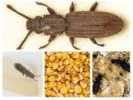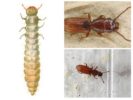- Suriname Mucoed
- Larvae of Surinamese Mukoed
- Fighting Surinamese Mukoed
To produce food is an extremely responsible matter, because people's health depends on the quality of the product. That is why the manufacturer is obliged to monitor the quality of what he supplies. It is especially closely necessary to observe the quality of the original product.
A variety of pests that can damage grain are well known to cereal producers. Often, housewives who have bought infected cereals in a store also get to know them. This is not only unpleasant for the consumer, but also negatively develops on the image of the manufacturer. One of these pests is Surinamese flour-eater. What kind of insect is it, where it comes from and how to deal with it should be found out.
Harm to humans
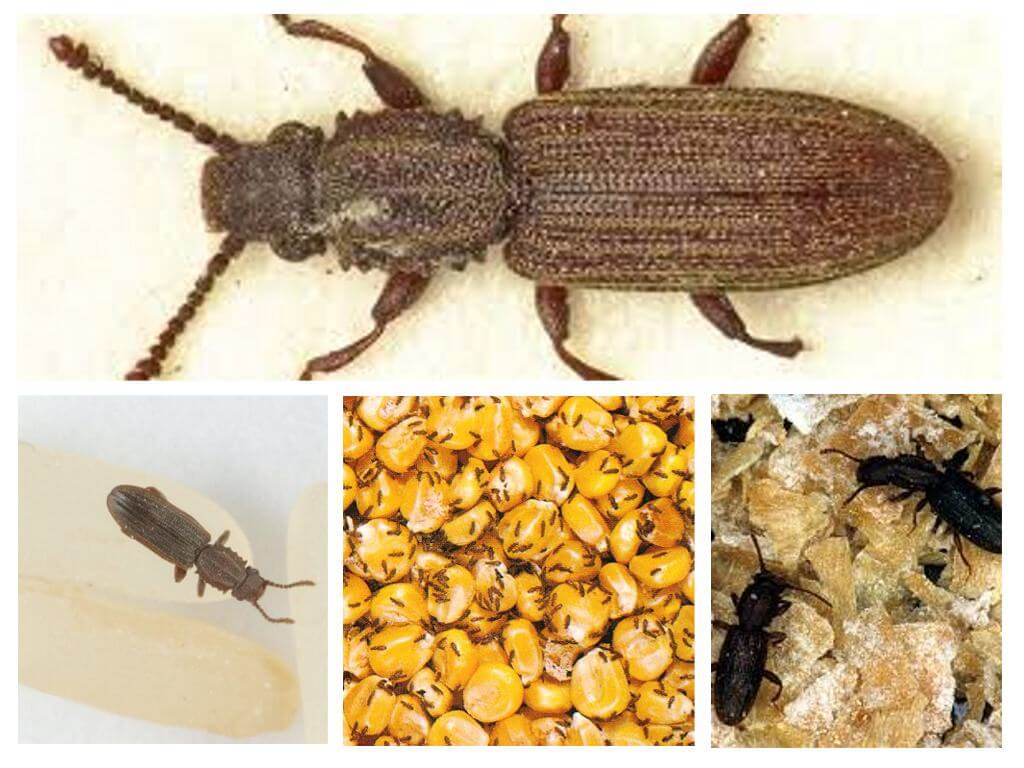
In flour, cereals and other products, you can see bugs of a dark color - most likely, this is Surinamese flour-eater. This pest grows to only 3.5 mm, it is difficult to notice in products with the naked eye. To familiarize yourself with its external features, you should carefully consider what the Surinamese mukoed looks like in the photo. He is different from another famous relative - gingerbread cookie.
The development of the Surinamese bug goes through the same stages as most insects: an egg, a larva, a pupa, and an adult insect. The pest prefers settling in mills and granaries. From here he migrates to bakeries, to bakery production, warehouses, store shelves and to buyers' homes.
On a note!
Once in flour or cereal, the beetle-eater beetle sets to work. Food is eaten not only by the larva of this insect, but also by an adult. Pest feces, skins from larvae, cobwebs from cocoons and other muck get into infected cereals.
The life of the insect is about 3 years (in favorable conditions). During this time, it is able to lay up to 600 eggs. One clutch contains 30 eggs, of which in just 30-75 days the same number of insects capable of breeding is obtained.
The rate of development of the parasite depends on its living conditions. For the mucoeater, humidity and ambient temperature are important. Optimum are 25 degrees and 65% humidity.
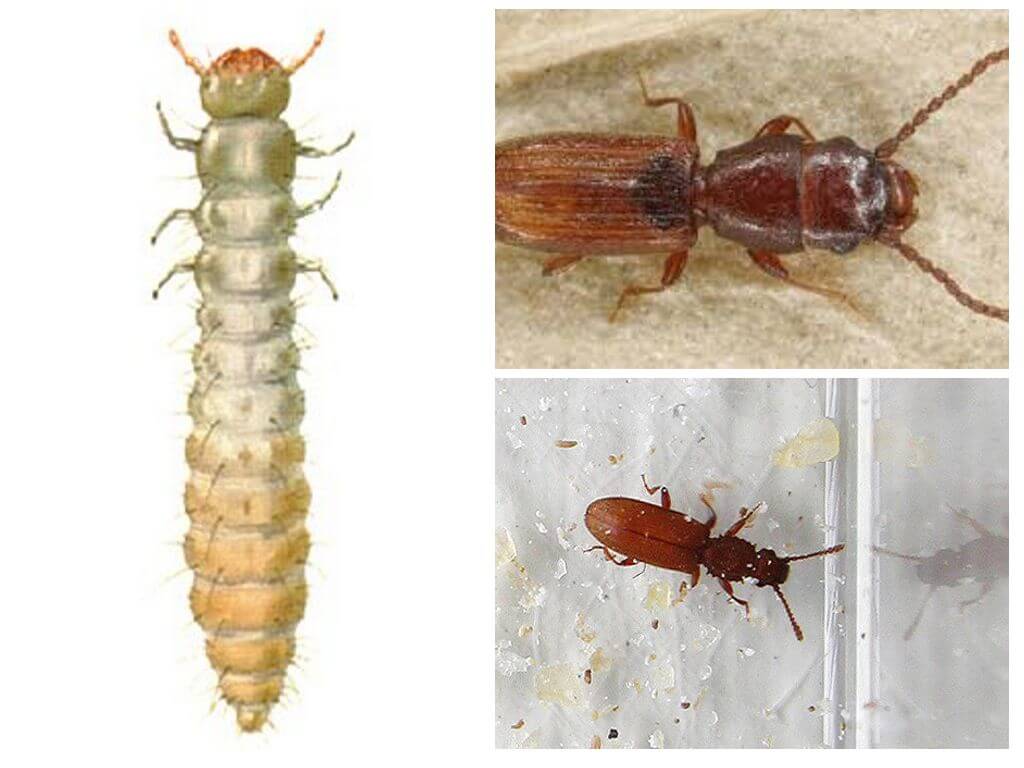
Pest eggs are very small - no more than 1 mm. Therefore, when buying and storing cereals, it is very difficult to see. Contaminated products should not be used as food even after heat treatment. To find out what this small bug is dangerous for a person, just look carefully at the composition of the spoiled groats: bugs, larvae crawl there, there is a huge amount of feces. The use of such cereals can provoke severe allergies or cause poisoning.
Important!
Some, especially economical, housewives believe that it is good enough to sort out the cereal and warm it in the oven. However, the cereal eaten by the mucoeater does not have any health benefits. No matter how thorough the inspection, many eggs will go unnoticed. You need to know how to get rid of Surinamese mukoed so that he does not have time to spoil the rest of the products.
Get rid of the pest
Destruction of Surinamese flour-eaters is mandatory for grain producers. The premises in which cereals are stored should be regularly inspected and processed with special chemicals.
Storage of carefully dried cereals at low temperatures is quite effective. The insect dies at temperatures below -15 degrees, so this should be taken into account when installing granaries.
If, in spite of all efforts, a mucoeater has appeared in the kitchen, it is urgent to find out how to poison such a “guest” and what else can be done.
Important!
The mucoeater lays eggs in various places, so it is not easy to destroy it. The destruction process should include a general cleaning of the kitchen with a thorough treatment of all cabinets and shelves.
To fight the Surinamese flour-eater, the following tools will be required:
- Disinfectant;
- Bay leaf;
- Garlic;
- Glass jars with tight-fitting lids;
- Nutmeg.
Acetic solution can be used as a disinfectant. The concentration of vinegar in it should be sufficient so that the smell of the product is clearly felt in the cabinet.
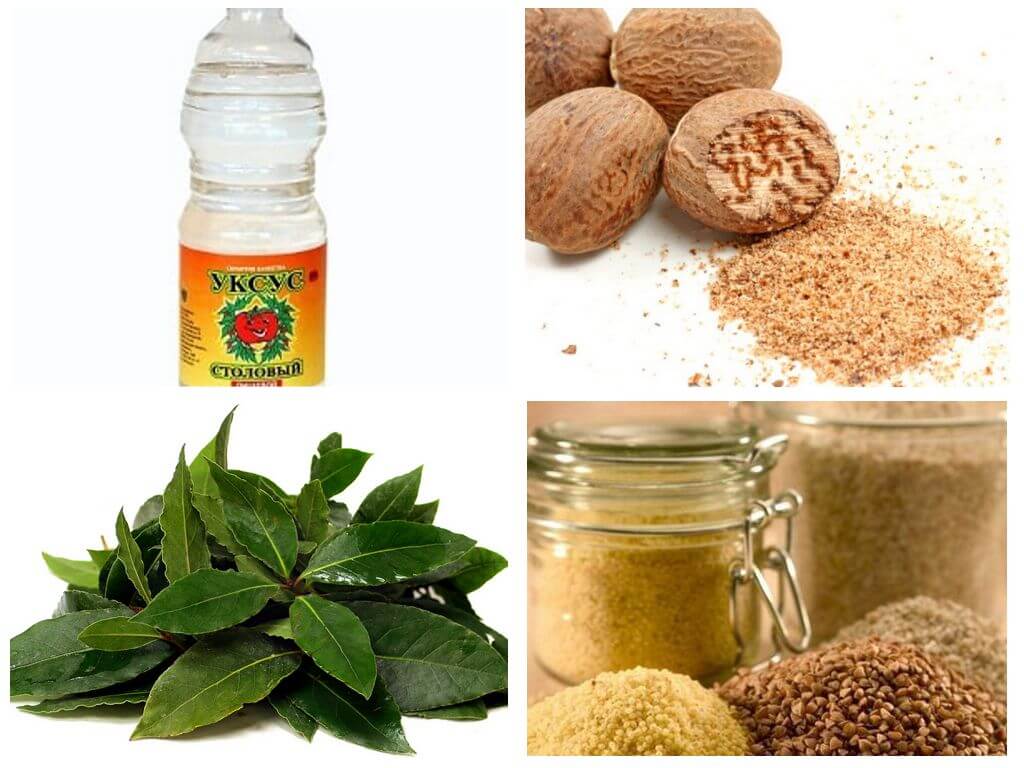
Next, proceed in stages:
- All purchases and stocks are carefully reviewed. Even if a small number of bugs are found in one package, this bag must be discarded. Inspect flour, crackers well, even if the packaging is sealed tightly. The favorite product of Surinamese flour-eater is flour. Even when it seems to be clean, it is better to throw it away;
- Rinse all cabinets, shelves, windowsill in the kitchen with vinegar or other disinfectant. To destroy as many bugs and their eggs as possible, you should do this more than once. Croup, which has not been invaded by a mucoeater, should be cleaned in the freezer or on the balcony (in winter). At these places, packaging should be left for at least 14 days. After that, if the bugs did not appear, pour the groats into jars, the lids of which fit tightly as possible.
- In the washed and dried cabinets put bay leaves, peeled garlic cloves - an apartment with these aromas will be protected from a large number of food pests that must be regularly removed.
- Pour nutmeg onto the strips of scotch tape in the middle and put inside the kitchen cabinets. In this way, you can catch the remaining adults of the Surinamese mukoed.
Prevention
You can get rid of the mucoeater, but it's easier to make sure that this harmful food bug can't even take root in your home.
- Prepare bags of their cotton fabric. Boil in a strong saline solution for half an hour. Leave to cool in water, then squeeze and dry. Iron with an iron. If you store cereals in these bags, Surinamese flour-eater will never appear in them.
- Since there is a high probability of “infecting” your stocks brought by “newcomers” from the store, all new cereals should be quarantined in the freezer for 3-4 days. Raisins and nuts should always be stored in the refrigerator. Sprinkle flour and cereals either in glassware with tight lids or in salted bags.
Compliance with simple preventive measures will never help to find out who the Surinamese flour-eater is and what harm it does to cereals.
